Political analyst Andy Langenkamp with our first reaction to Trump's tariff announcement yesterday evening. Questions about hedging interest rate, FX, or commodity risk under current market conditions? Wer are more than happy to discuss in an intraductory MS Teams meeting.
Excecutive summary
- In a dramatic move, the White House declared yesterday a 10% “universal” tariff on all imports, and many major economies are singled out for even higher “reciprocal” rates – 54% on Chinese goods, 20% on EU goods, 24% on Japanese goods, and 26% on Indian goods.
- Trump’s tariff targets U.S. allies almost as harshly as strategic rivals, sending shockwaves through capitals and igniting calls for retaliation, increasing the risk of a global trade war.
- Strategically, this tariff offensive risks splintering the united front the U.S. might need on other geopolitical issues. Tensions over trade could and probably will spill into defense and diplomacy, tilting the geopolitical balance in ways that could outlast the tariffs themselves
- The U.S. is clearly aiming to force a decoupling of the world’s two largest economies; the US and China. The strategy has been described as economic containment, and China is unlikely to yield without a fight.
- Geopolitically, a fast deteriorating US - China economic relationship could spill into other arenas – from competition for influence in emerging markets to military posturing in East Asia – as economic interdependence no longer acts as a buffer against conflict.
- This tariff escalation is not happening in a vacuum – it is both a symptom and accelerator of a larger deglobalization trend.
- The traditional mechanisms to prevent trade spats from escalating – namely the WTO’s dispute system – have been marginalized as the US is now withdrawing support for the WTO altogether. This leaves countries with little choice but to retaliate directly or seek ad-hoc negotiations.
Tariff Shock
President Donald Trump has possibly ignited a trade war with an unprecedented sweep of tariff announcements. In a dramatic move, the White House declared a 10% “universal” tariff on all imports, and many major economies are singled out for even higher “reciprocal” rates – 54% on Chinese goods, 20% on EU goods, 24% on Japanese goods, and 26% on Indian goods. Trump proclaimed this trade offensive as “our declaration of economic independence”. But globally, it’s being seen as an economic earthquake that is upending decades of globalization and injecting enormous uncertainty into markets. Washington’s latest trade moves, effective from next week, have profound implications across global politics and for the world economy.
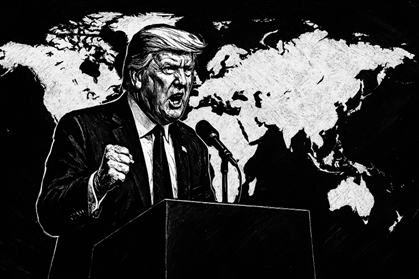
Allies in the Crosshairs
Trump’s tariff broadside targets U.S. allies almost as harshly as strategic rivals, a move with profound geopolitical implications. The European Union – America’s long-standing partner – now faces a 20% tariff on its exports to the U.S. Japan, a cornerstone of the U.S. security alliance in Asia, was slapped with 24% duties. Even India (recently courted as a counterweight to China) is hit with 26% tariffs, a rate only slightly “discounted” from the levels for adversaries.
By pulling the tariff trigger on friends and foes alike, Washington has sent shockwaves through capitals. Allied leaders have responded with alarm and dismay. Germany’s Chancellor Olaf Scholz bluntly warned that “the U.S. has chosen a path at whose end lie only losers, since tariffs and isolation hurt prosperity for everyone." Such rhetoric underscores the breach these tariffs have opened with Europe, potentially weakening the Western unity forged in recent decades. In Asia, Japan’s government called the U.S. actions “unacceptable” and vowed to consider “all options” in response. Earlier, Canada’s prime minister Mark Carney promised to “fight the U.S. tariffs with retaliatory trade actions of our own that will have maximum impact in the United States and minimum impact here in Canada."
However, not everyone opted for a confrontational stance. Australian Prime Minister Anthony Albanese said: “It is the American people who will pay the biggest price for these unjustified tariffs. This is why our government will not be seeking to impose reciprocal tariffs. We will not join a race to the bottom that leads to higher prices and slower growth.” And Italian Prime Minister Giorgia Meloni, seen as close ally of Trump, said “We will do everything we can to work towards an agreement with the United States, with the goal of avoiding a trade war that would inevitably weaken the West in favour of other global players.”
Notwithstanding these conciliatory words, allies are coordinating on retaliation and recalibrating their strategic alignments. EU officials are weighing tariffs on iconic American products and considering legal action at the WTO. However, the U.S. has hamstrung the WTO, reportedly pausing its financial contributions to the trade body after having already paralyzed its appellate body. By undermining the very arbiter of trade disputes, Washington is effectively telling partners that grievances will be settled by power, not rules. This “might makes right” approach is forcing traditional U.S. allies to rethink their reliance on America. We may see closer trade cooperation among the EU, Japan, India, and others as they seek strength in numbers against U.S. pressure. Ironically, Trump’s tactics could drive U.S. allies toward independent trade pacts – or even tentative partnerships with China – to insulate themselves from American unpredictability.
Strategically, this tariff offensive risks splintering the united front the U.S. might need on other geopolitical issues. Tensions over trade could and probably will spill into defense and diplomacy. For example, frictions with Europe and Asia come just as the U.S. is urging these same allies to support its stance on issues like tech security and Indo-Pacific strategy. By weaponizing interdependence against allies, Washington may find fewer takers for future cooperation.
In short, the tariffs have injected new volatility into U.S. alliances, tilting the geopolitical balance in ways that could outlast the tariffs themselves.
U.S.-China Showdown: From Engagement to Estrangement
At the center of this storm is the U.S.-China economic relationship, now arguably at its lowest point in decades. On top of existing duties, Trump’s announcement imposes a fresh 34% tariff on Chinese imports, bringing the effective rate on most Chinese goods to a crushing 54%. This is not a targeted measure on select industries – it is a sweeping tariff designed to hit (almost) everything China sells into the U.S. market. In Beijing, there will be little doubt that this marks a decisive escalation of the trade war that first erupted in 2018. What was once a trade skirmish over IP and steel has morphed into a full-fledged economic confrontation.
From a strategic lens, the U.S. is clearly aiming to force a decoupling of the world’s two largest economies. Washington’s message: China’s rise via “unfair” trade practices will no longer be tolerated, and U.S. supply chains must disengage from China’s orbit. This aligns with other U.S. moves to contain China – such as sweeping export controls on advanced semiconductors and efforts to block Chinese access to critical U.S. technology. Taken together, tariffs and tech restrictions form a one-two punch that seeks to rewrite the terms of engagement with Beijing. The strategy has been described as economic containment, and China is unlikely to yield without a fight.
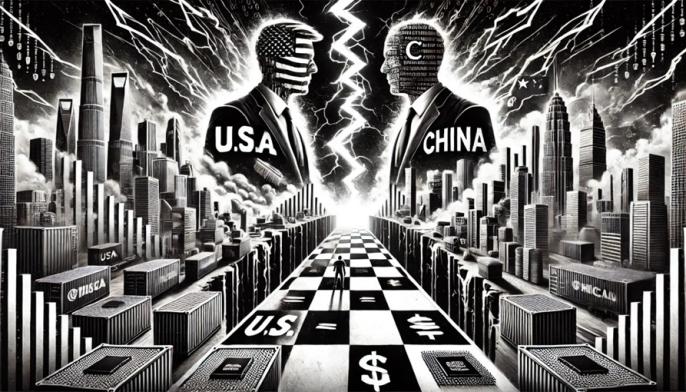
Beijing’s response is already unfolding. Chinese officials blasted U.S. tariffs as undermining the multilateral trade system and warned they are “not conducive to solving [America’s] own problems.” Beyond rhetoric, China is preparing retaliation. We can expect tariffs on U.S. exports to China to ratchet up – likely targeting politically sensitive sectors like agriculture (e.g. soybeans, where China’s market power can hurt Trump’s rural base). China also holds other levers: restricting exports of critical materials (rare earth minerals essential to U.S. tech and defense), stepping up regulatory pressure on American firms in China, and allowing the yuan to weaken to offset tariff costs.
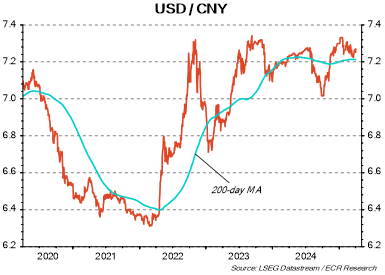
In a worst-case scenario, Beijing could even consider curbing purchases of U.S. Treasuries or coordinating with other nations to build alternative trade and finance architectures outside U.S. influence (it already has taken steps into that direction).
For multinational companies, the splitting of the U.S.-China nexus means tough choices ahead. Many Western firms had already begun “China +1” strategies (diversifying some production to Southeast Asia or Mexico) during the past trade war; now those contingencies will accelerate. The tariff gulf – over 50% – is simply too wide for many businesses to absorb. If these tariffs hold, expect an exodus of manufacturing for U.S. markets out of China, perhaps shifting to India.
The broader U.S.-China relationship will likely take on an even more adversarial tenor beyond trade. Trust is at a nadir. Any hopes of reviving the defunct “Phase 1” trade deal or negotiating new market access have probably evaporated. Instead, both nations are bracing for a long-term economic standoff. The tariffs reinforce a narrative in Beijing that the U.S. will do anything to impede China’s development, which could strengthen nationalist resolve within China to double down on self-sufficiency (e.g. the “dual circulation” strategy – that faces obstacles of its own - to boost domestic demand and tech independence).

Geopolitically, a fully antagonistic economic relationship could spill into other arenas – from competition for influence in emerging markets to military posturing in East Asia – as economic interdependence no longer acts as a buffer against conflict. This means, for example, that the very high US import tariffs on Chinese goods have increased the risk of a hostile take over (or blockade) of Taiwan by China.
In sum, these new tariffs could mark a decisive break from engagement to estrangement between the world’s two largest economies.
The New Era of Deglobalization
This tariff escalation is not happening in a vacuum – it is both a symptom and accelerator of a larger deglobalization trend. Trump’s trade gambit signals that the era of ever-freer trade flows, which defined the late 20th century, has given way to a new era of economic nationalism. The administration explicitly framed these tariffs as correcting decades of naive globalization. “Our country has been looted and plundered by other nations,” Trump thundered, vowing that “it is not going to happen anymore.”
This populist narrative – that the U.S. opened its markets too widely and must now reclaim sovereignty – resonates with many American voters who feel left behind by offshoring and imports. It also dovetails with Trump’s domestic political agenda: tariffs are presented as a way to bring back manufacturing jobs and as leverage to force trading partners into “fair” deals, all while raising revenue to offset his promised tax cuts. On a global scale, Trump’s sweeping duties reverse decades of trade liberalization that have shaped the global order. Since World War II, the U.S. led in building institutions like GATT/WTO to reduce tariffs and foster interdependence as a pillar of peace and prosperity. Now, the U.S. itself is actively dismantling that system erecting new barriers around the world’s largest consumer economy.
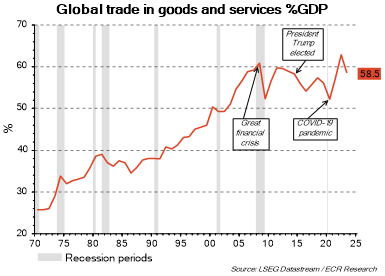
This protectionist turn by the U.S. is emboldening similar sentiments elsewhere. We are effectively seeing a paradigm shift from globalism to bilateralism (or even unilateralism). Deals and alliances may increasingly hinge on “reciprocity” as narrowly defined by each nation’s perceived self-interest, rather than on mutual benefits of integration.
The immediate fallout of Trump’s tariffs will likely be an upsurge in retaliation worldwide – pushing deglobalization into a self-reinforcing cycle. U.S. trading partners large and small are preparing counter-tariffs and other barriers in response. The European Commission has hinted at targeted tariffs aimed at U.S. exports from swing states (an echo of its playbook during previous disputes, to maximize
Deglobalization also carries a narrative beyond pure economics – it fits into domestic political trends across many nations. In the U.S., the tariff push aligns with an “America First” ethos that rebukes multilateralism. In Europe, it may bolster factions that advocate “strategic autonomy” apart from the U.S. In developing countries, U.S. protectionism could fuel skepticism about Western-led globalization, prompting them to diversify partnerships (for instance, more South-South trade).
Politically, a more fractured global trade environment is both a consequence and a cause of shifting power dynamics. Nations are asserting sovereignty in economic policy even at the cost of efficiency. For multinational businesses and investors, this means the rules of the game are changing: market access can no longer be taken for granted, and the political risk of supply chains has never been higher.

Supply Chain Shock
For corporate leaders, Trump’s tariffs land like a supply chain tsunami. The immediate effect will be disrupted logistics and higher input costs across countless industries. Companies that rely on imported components or finished goods now face an extra 10% (or more) cost on every item coming into the U.S. from next week onwards. Many firms will pass on (some of) the costs to consumers, fueling inflation. Others will frantically seek alternate suppliers in tariff-free (or lower-tariff) countries, potentially paying a premium for non-Chinese sources.
Inflationary pressure is a chief concern. By restricting the supply of low-cost imports, tariffs give pricing power back to domestic producers, resulting in price hikes. We are already seeing anecdotes: European luxury auto brands have indicated they will raise U.S. prices (e.g. Ferrari already announced up to 10% price increases for American buyers in response to the new auto tariffs). A JPMorgan analysis estimated the new auto tariffs alone could add $4,000–$5,300 to the sticker price of an average new car. Similar price increases are likely for other big-ticket goods like appliances and electronics. Even everyday consumer products – from bicycles to wine – are set to get pricier, due to the cascading effect of tariffs and foreign counter-tariffs. The upshot: U.S. inflation, which had been moderating, may see a significant one-time jump over the coming months. For companies, this complicates everything from cost management and pricing strategy to wage negotiations.
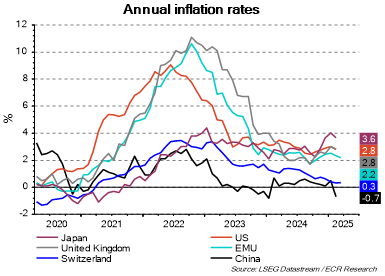
Companies must also navigate the tariffs’ many carve-outs and complexities. The administration did exempt certain critical commodities from the “reciprocal” tariffs: for instance, pharmaceuticals, semiconductors, energy, copper, lumber, and some scarce minerals are not subject to the country-specific surcharges. These exceptions acknowledge that slapping tariffs on inputs like oil or chips would directly harm U.S. industry. However, the exemptions are narrow. Many downstream products are still affected.
Additionally, a loophole that allowed Chinese e-commerce packages under $800 to enter the U.S. duty-free (the “de minimis” rule) will now been closed, cutting off a channel that small businesses and consumers relied on for cheap goods.
Each of these changes requires rapid adaptation: supply chain managers are re-evaluating vendor contracts, shipping routes, and inventory strategy (e.g. stockpiling critical components before partner countries retaliate or before more tariffs hit).
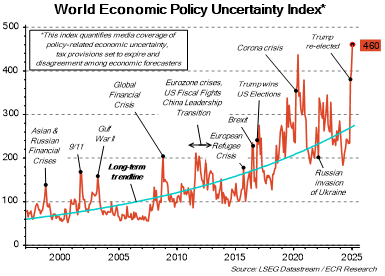
The strategic recalibration for multinationals will be significant. Many firms will accelerate the trend of “near-shoring” or “friend-shoring” – bringing production closer to the U.S. or to allied countries to mitigate tariff risk. Mexico, for example, had been a beneficiary of U.S.-China tensions as companies shifted assembly there.
Businesses will weigh the tariffs against costs of relocating production: some may still find it economical to manufacture abroad and pay the tariff, while others, especially in lower-margin industries, will conclude that domestic production or sourcing is now safer. We are likely to see increased capital expenditure on U.S. manufacturing capacity in certain sectors (steel, autos, industrial machinery) as tariff walls provide temporary protection to invest at home.
Yet these shifts come with time lags and execution risks. Building new factories or qualifying new suppliers can take years – time during which businesses will be squeezed between higher costs and an inability to instantly change their supply network. In the interim, profit margins will be under intense pressure. For example, a U.S.-based appliance maker might enjoy protection from foreign competitors on the final product, but if it relies on imported steel and electronics, its input costs are up. Over time, if broad tariffs persist, they can even reduce global demand enough to hurt everyone’s margins, domestic and foreign, as economic growth slows.
In strategic terms, these tariffs force a reckoning: globalization had optimized supply chains for efficiency; now resiliency and tariff avoidance drive decision-making. For companies, the priority becomes ensuring they can withstand a sustained period of trade fragmentation – this could mean holding more inventory (despite carrying costs), locking in alternative suppliers on different continents, and possibly reconsidering which foreign markets are worth investing in if reciprocal tariffs abroad make U.S. exports uncompetitive.
U.S. companies may face difficult conversations with customers and suppliers about price adjustments and with workers about potential cost-cutting. If demand softens due to higher prices, some firms might resort to layoffs. One financial advisor summed it up starkly: “None of this leads to more jobs or better wages. It leads to sluggish sales, costlier credit, and potential layoffs – exactly what a fragile economy doesn’t need.”
This warning highlights that beyond the political theater, tariffs carry a real risk of collateral damage to the wider economy and to financial markets. For a deep dive into the effects of Trumps tariff tantrum on financial markets, don’t miss our chief economist’s Global Financial Markets, out tomorrow.
